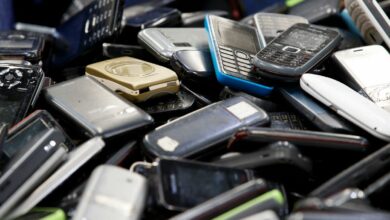
I was having lunch at a restaurant on one fine Saturday afternoon.
As my eyes wandered around the premises, I noticed two families seated just a few tables away. One of them is Japanese; while the other table, seated closer to me was a Malaysian family.
What caught my eye, were the toddlers from these two tables. The toddlers had their eyes fixated on a tablet and a smartphone respectively while the parents chatted and dined.
The scenario speaks volumes about modern childhood. Children are growing to become what some called “the touchscreen generation”.
If you are attentive, you would have realised that this is a phenomenon commonly seen at home and in the public. Some of the readers may have had similar experiences when attempting to pacify a child — hand over an iPad to a screaming child has repeatedly proven to be effective in calming the child.
While running chores, many parents have resorted to the option of using tablets and smartphones to keep their children entertained. Some parents have also downloaded interactive apps specifically designed for toddlers and young children as a part of their learning and playing routine.
Come to think of it, is that not how we keep ourselves occupied since the invention and mass adoption of smartphones and tablets? Increasingly, we have even embraced the idea of building friendships and connections through apps!
Technology has evolved into an integral part of our lives day in and day out, that it may seem natural for some parents, to introduce technology to their child early on.
Rather than running around in imaginary superhero capes, or poking at broken tree branches in a park, more children are now accustomed to staring at a screen. The thing is, the world and human-to-human communication is much more complex than that.
Exposed to technology at a very young age, the way a child learn and experience the world would become too one-dimensional. While there may be educational apps out there that is formulated to stimulate the development of critical thinking at an early age, one can argue that without proper guidance, a child would risk becoming a passive receiver of new information.
For an all-rounded social and emotional development, children have to be in an environment that stimulates them learning through hands-on, face to face experiences with adults.
A smart device easily offers delightful experiences, as it has become possible to do many things at the swipe of a finger, to have hundreds of songs and games packed into a gadget the same size as, if not smaller than, a children’s storybook.
In a world where most of the internet-connected population are migrating a portion of their identity online, it makes me treasure offline connections even more.
When we start conditioning our children using gadgets and apps to shift their focus from the real world environment, we are gradually instilling in our children the belief that gadgets are more interesting than real world interactions.
Try to picture this scenario: the next time you initiate a conversation with your child, you will likely have less than 30 seconds of their undivided attention. Before you even realised, they have already unlocked the iPad and are halfway through a YouTube video.
There is no way to make up for the bond lost in a never-ending stream of apps.




